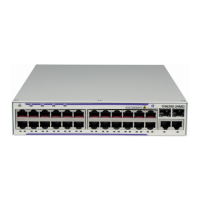Command Hierarchies
Page 324 7210 SAS M, T, X, R6 Basic System Configuration
Clear Commands
clear
— cron
— action
— completed [action-name] [owner action-owner]
— screen action-name [owner owner-name]
— system
— ptp inactive-peers
— ptp peer ip-address statistics
— ptp statistics
— sync-if-timing {ref1 | ref2}

